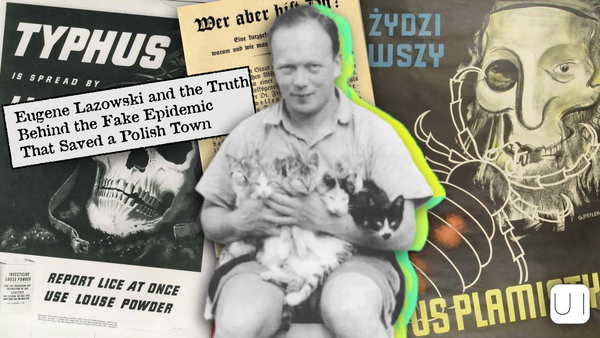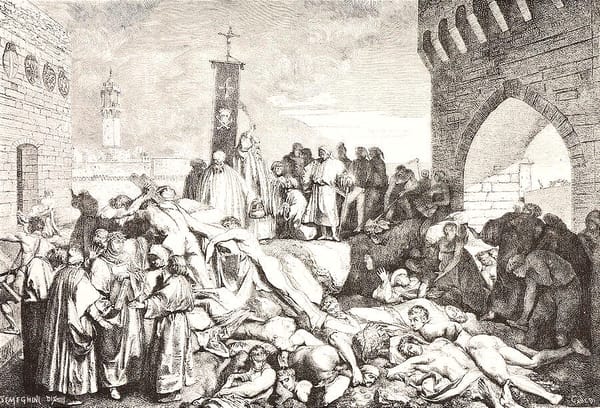Her manual for hitmen became a major First Amendment case
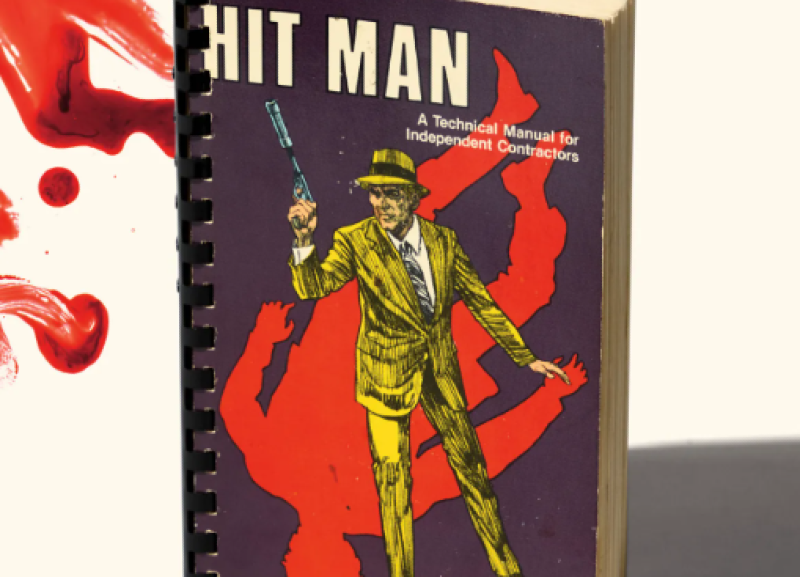
From Vanity Fair: "I first heard of Hit Man in May 1999, when I was a young journalist in Philadelphia. Paladin Press’s insurance company had just settled with the victims’ families for undisclosed millions, a decision that made international headlines. The case was unprecedented; never before had a publisher been accused of “aiding and abetting” murder through the publication of a book. Major media organizations that had rallied to Paladin’s defense — including The New York Times, The Washington Post, and the Society of Professional Journalists — now pondered the ramifications for free speech. Lost in most of the discussion was Hit Man’s mysterious author. Only one detail about her life had come to light so far: She was a divorced mother of two living in a trailer park in Florida. I grew obsessed with her. How did this woman come to write a murder manual? What had happened in her life to bring her to that point?"
She claimed to be a German princess and her trial for bigamy started a publishing boom
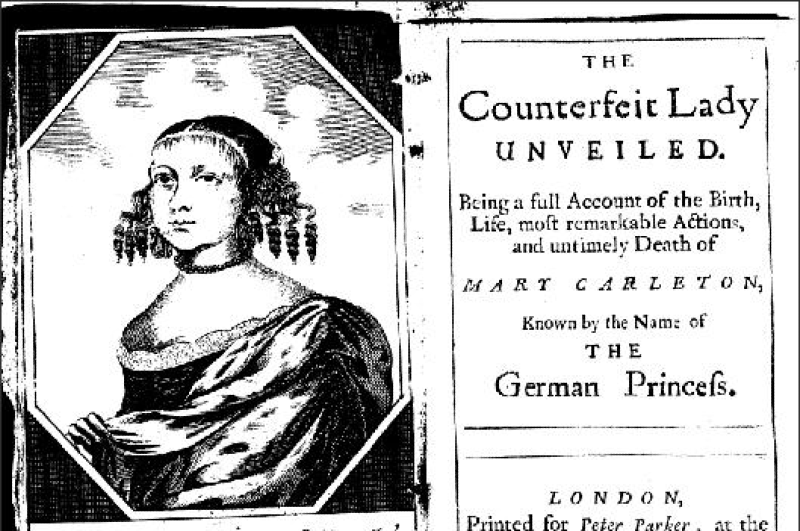
From Public Domain Review: "In early June of 1663, Mary Carleton was tried for bigamy in London’s Old Bailey. A figure of considerable public fascination, Mary had been “viewed” by an estimated five hundred visitors while in prison awaiting trial.1 Officially, she stood accused of having wed John Carleton in London while already married to John Steadman, a shoemaker, in Canterbury. (Over the course of the trial, the possible existence of a third husband, a Dover surgeon named Day, emerged.) Unofficially, she stood accused in the court of public opinion of a far more interesting cheat: impersonating a fabulously wealthy foreigner in order to lure the hapless Carleton — a lawyer’s clerk, eighteen years old — into marriage. Though Mary herself modestly claimed noble rather than royal birth, she became widely known as the German Princess. Mary Carleton’s exploits produced a publishing boom: 1663 alone witnessed the printing of more than a dozen pamphlets about the case, a pair of autobiographical self-defenses by Mary herself, two rebuttals by John, and printed reports of the trial."
The 3,000-year-old story behind the @ symbol

From the BBC: "In Taiwan they call @ "little mouse". It's "dog" in Russian, "strudel" in Hebrew and "monkey's tail" in Dutch. The @ sign is a mirror, and its story goes back thousands of years. The ancient Greeks were fond of a style of clay pot called an amphora. You've seen them – tall and shapely with two handles and a long neck. Amphoras were used to store wine, grains, olive oil and more, a practice that continued in the Mediterranean and beyond for centuries. As time went on, an amphora became a standard unit of measure. Merchants had to communicate the idea that 'I'm going to sell you a certain number of amphoras of something or other at a particular price' quite a lot. And eventually, people started drawing an "a" with a long tail wrapped around it and skipping the rest of the letters. In 1536, a merchant named Francesco Lapi wrote a letter where he said that an amphora of wine was worth around 70 or 80 ducats, using an @ for amphora. That's the first example we've found of @ used in the modern sense."
Hi everyone! Mathew Ingram here. I am able to continue writing this newsletter in part because of your financial help and support, which you can do either through my Patreon or by upgrading your subscription to a monthly contribution. I enjoy gathering all of these links and sharing them with you, but it does take time, and your support makes it possible for me to do that. I also write a weekly newsletter of technology analysis called The Torment Nexus.
What happened when a Pacific island was suddenly cut off from the internet

From The Guardian: "The cable that connects Tongatapu to Fiji and thence to the world is 515 miles long and forms part of a cable network called Southern Cross. It was switched on in 2013. A 250-mile domestic cable between Tongatapu and the northern island of Vava‘u began operating in 2018. In general, this pocket of the Pacific is a rough neighbourhood for undersea cables. Along with the volcanoes, there are steep underwater slopes with plenty of canyons, and the regular threat of earthquakes. Even a year and a half after Hunga Tonga-Hunga Ha‘apai’s eruption, no one knew precisely what had happened on the ocean floor that Saturday. But geologist Mike Clare, at the National Oceanography Centre in Southampton, had pored over enough sonar readings and sediment samples to build a theory. It ran like this: when Hunga Tonga-Hunga Ha‘apai shot its innards into the atmosphere, the dense rock and sediment fell back into the ocean at a furious pace, hit the flanks of the volcano and rocketed down its slopes."
At 102 years old Charlotte Chopin is still teaching yoga in this small French town
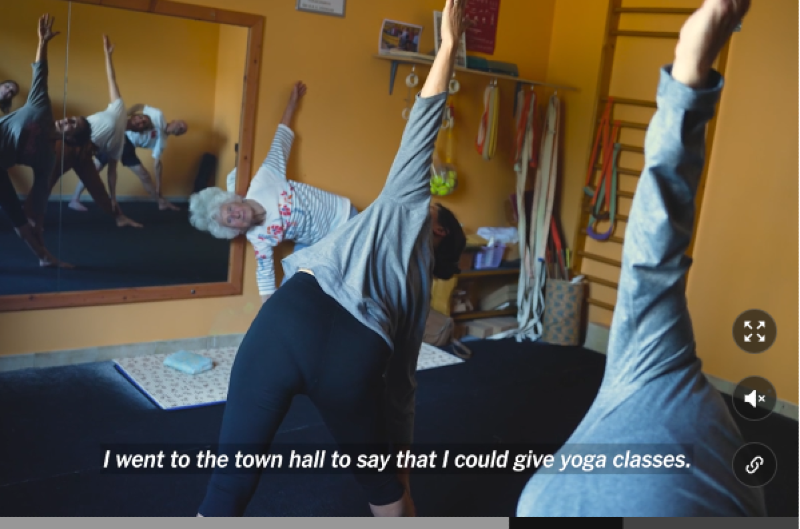
From the NYT: "On a cloudy Wednesday evening in mid-September, Charlotte Chopin assumed the position she has held for more than 40 years. Dressed in a loose-fitting striped cotton top and pants, her short white hair a bit wild, she called her students to attention and began guiding them through stretches, encouraging them to follow her lead. To a newcomer, Ms. Chopin’s slight build and reserved demeanor might initially be mistaken for frailty. Then they’d watch her do a series of warrior poses — her feet firmly planted on the ground, her arms stick straight, her form effortlessly flowing from one posture to the next. Since 1982, Ms. Chopin, now 102 years old, has taught yoga in Léré, a French village. Its windy roads are lined with ramshackle homes, many of the storefronts seemingly abandoned. You may encounter a sheep or donkey, but little else. Nestled in this landscape is her studio — a small, square room with walls painted peach and housed inside a former police station. Its changing rooms were once jail cells."
This is how far a Belgian Malinois dog can jump

Acknowledgements: I find a lot of these links myself, but I also get some from other newsletters that I rely on as "serendipity engines," such as The Morning News from Rosecrans Baldwin and Andrew Womack, Jodi Ettenberg's Curious About Everything, Dan Lewis's Now I Know, Robert Cottrell and Caroline Crampton's The Browser, Clive Thompson's Linkfest, Noah Brier and Colin Nagy's Why Is This Interesting, Maria Popova's The Marginalian, Sheehan Quirke AKA The Cultural Tutor, the Smithsonian magazine, and JSTOR Daily. If you come across something interesting that you think should be included here, please feel free to email me at mathew @ mathewingram dot com
